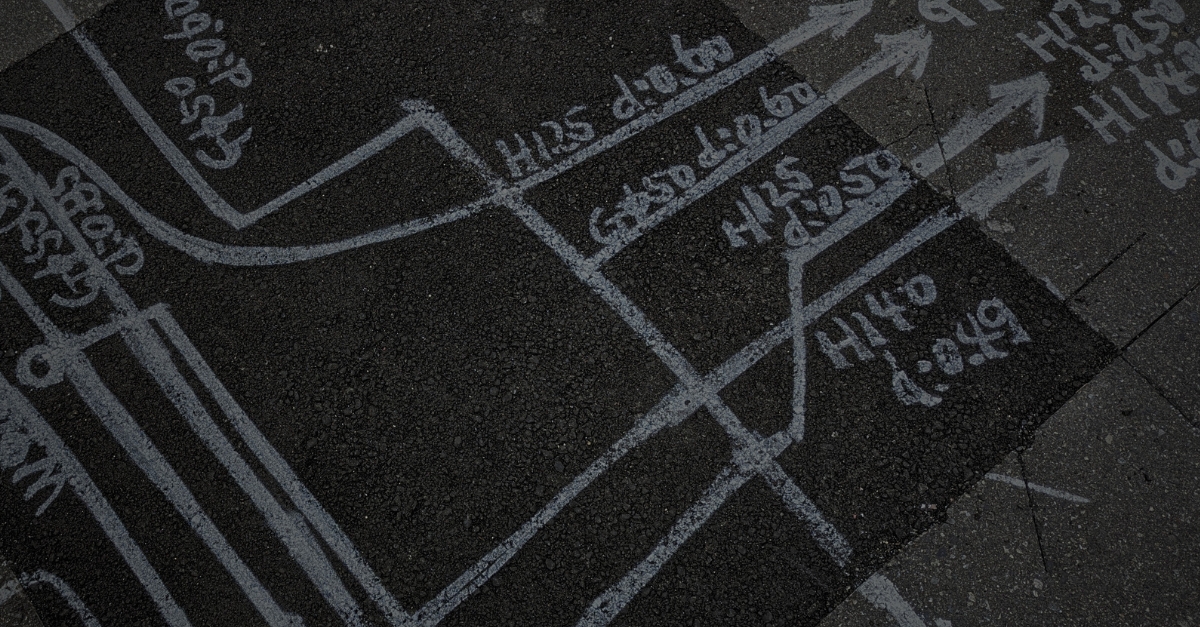
Intro to Augmented Reality (AR)
Augmented Reality (AR) is a technology that allows a user to superimpose graphics and information onto their current view of reality in real-time. At present, the most popular AR applications are for use on smartphones. However, augmented reality is used in many more instances that may not immediately be perceived as AR. Think of the rear view camera in cars that help to guide the driver while backing up, or the grid guide on your smartphone camera that is used for getting the best photo composition, or even voiced directions from Google Maps—all are instances of utility-driven augmented reality.
L. Frank Baum wrote about “Augmented Reality” as early as 1901, with his electric character marker glasses that allow one to see who was labelled as good or evil [1]. While Braum was ahead of the times, not until more recently have a majority of modern consumers become familiar with the term Augmented Reality. Earlier on this technology was only available to NASA and the military back in 1990. Applications ranging from NASA and the military for video map overlays back in 1999, to AR helmets for the outdoors demoed by Trimble inc. and HIT labs. But in 2020 augmented reality(AR) has been gaining popularity from its use by companies Niantic Inc. and Social media giants Instagram and Snapchat.
How did augmented reality move forward from being used by NASA, to seeing daily use internationally with apps like Pokemon Go, and What's the next step towards mass adoption of the technology?


Innovation Adoption Lifecycle
The adoption lifecycle of technology, originally published by Joe M. Bohlen, George M. Beal and Everett M. Rogers at Iowa State University in 1957. It has since been adopted and modified to create the technology/innovation adoption life cycle. The model displays the various demographics of a population that adopts new technology in order from the first innovators of new technology to those who are most skeptical of it.

Originally the model defined the demographics as the following:
Innovators: Were more educated, more prosperous and more risk-oriented
Early Adopters: Younger, more educated, tended to be community leaders, less prosperous
Early Majority: More conservative but open to new ideas, active in the community and influence to neighbours
Late Majority: Older, less educated, fairly conservative and less socially active
Laggards: Very conservative, oldest and least educated
When we map out some of the notable applications of AR on the adoption model, it’s safe to say that AR is currently in the “early majority” phase of its cycle. A majority of the applications that exist within this demographic are mostly social or game-related in context such as Pokemon Go, Bitmoji on Snapchat, and Animoji on iOS. While many use cases that exist in the realm of entirely new devices still tend to exist in the “early adopters” stage of the adoption cycle such as Microsoft Holo lens headset. Right now AR is sitting in the early majority phase of innovation, but what will it take for it to enter the late majority phase of adoption?
Imagine the kind of application your grandmother might use AR for.
Utilizing Common Hardware
If we’re going to predict what applications will propel AR further along the adoption life cycle, we should start by figuring out what scenarios/devices people tend to use the technology on currently. In what scenarios are people naturally adopting the technology? People generally flock to technology that doesn't present drastic change, but an experience that feels familiar but fresh.
In terms of mass consumption and adoption of new technology, the secret seems to lie in slowly introducing small features that live in existing product ecosystems consumers already use and trust. For example, any habitually used device or operating system would theoretically be an effective touchpoint for injecting new features using AR.
Not having to rely on foreign hardware helps reduce the initial friction that tends to come with new technology. There is recent evidence to prove this, out of 1,000 people in the United States, 77% said they had used AR/VR (Virtual reality) on a smartphone device. Next to only 35% using the technology on PC and/or Console. Only 19% of the respondents admitted to using AR and/or VR on a standalone device.

Using Augmented Reality Towards Utility
The device by which one experiences new technology is proven to be important when talking about the adoption of new technology, in our case AR. Ease of use/access generally will encourage the average user to try new features that utilize AR. For example, a user is more likely to download an app that uses AR on their mobile phone, than purchasing a new headset device. But which device context, is not the only factor that plays a role in wider adoption. Designing with function in mind may also help with adoption. Now that we have people using AR, how can its unique features lend themselves to help enhance real-time moments and become more useful as a feature?
Will utility-driven features leveraging AR within phone applications, be the next step in solidifying AR within the “late majority” stage of its innovation life cycle? Instead of leveraging AR for novelty, we can leverage the technology for function-driven features as well. Enhancing a user’s experience within applications that would benefit from the virtual placement of objects in real-time. Let’s look at a few examples of applications that are currently leveraging this idea and some industries that present opportunities to do so.
Google AR Maps (in beta)
Google Maps is used by approximately 11 million people globally to figure out how to get from point A to B. Google has begun to develop a new feature within the existing architecture of the application that utilizes AR arrows that help provide real-time context to the directions the user is following. This feature has the potential to greatly reduce friction within the user experience of following Google Maps directions.

Amazon AR Product View
eCommerce giant, Amazon, has also implemented a feature into their Amazon mobile application that leverages AR to bridge the gap between product preview and reality. Yet another example of leveraging AR to bridge the gap between reality and an ecommerce experience. The feature allows users to select any Amazon product and place it in their home. Through the phone, you can preview how a couch might look in your living room without actually moving it there. This feature provides great error prevention for users so they don't have to go through the nightmare of making an online return, and boosts customer experience and customer satisfaction for Amazon.

Ikea Digital Table (Prototype)
Developed by students at Lund University and Eindhoven University of Technology, the Ikea Digital Table is a prototype table that leverages image recognition and projection to streamline the experience of being in the kitchen. Interactive AR provides an intuitive way to learn how to cook. This example is yet another way of seeing how integrating new technology into familiar objects and environments can set a product up for success by merging the innovation with the familiar.
There are many cases that have multiple use cases where leveraging utility-driven AR experiences would be beneficial.
At Tennis we work across a handful of industries and can speculate on where there are opportunities to increase customer experience through functional AR. It could be opportunities in the retail space such as AR mirrors that could function as accessible fitting rooms, or AR directional maps for large shopping malls. Maybe it’s opportunities in the automotive industries that deal with heads up displays, disrupting what we now know as the car dashboard. Or even healthcare, which has many opportunities for AR technologies.
We can leverage AR to enhance customer experience within applications that would benefit from augmenting reality with function. AR has the potential to be used for more than novel features, but for enhancing holistic customer experiences.
Utility-driven AR may be the next big thing for your company in 2020.
Do you have any project initiatives that might leverage AR for utility? Tennis can help launch it. Let’s get in touch.
Thanks for reading
References
[1] XX p. 94 The Master Key: An Electrical Fairy Tale, Founded Upon the Mysteries of Electricity and the Optimism of Its Devotees is a 1901 novel by L. Frank Baum,




